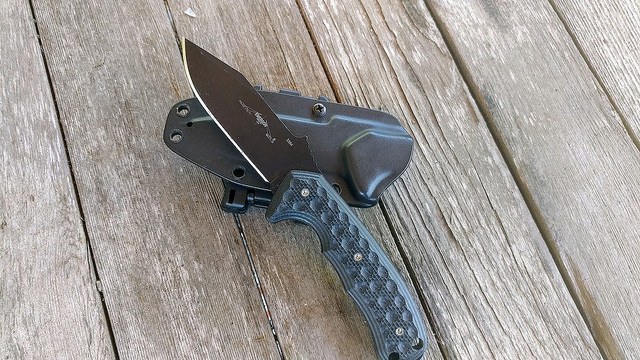Wood paneling can add a nice touch to rooms in your home, whether used as wainscoting or to cover the entire wall. Regardless of whether you are seeking to create an elegant style or something casual and homey, the right wood paneling can make a world of difference, creating a warm, comfortable feeling for your family.
Wood paneling is usually installed over existing drywall, even in new construction. That’s because the average wood panel is only ¼” thick, so it doesn’t have the rigidity and structural strength to stand alone. Rather, it is made with the idea that it will be used over some other substrate to support it.
One of the problems in working with paneling is that it is very easy to splinter it while cutting. This has led to more than one piece of paneling being discarded, or some rather odd-looking trim work done on the paneled walls, in order to hide the mistakes made in cutting the paneling. The question is, how to cut paneling in a way that ensures that the finished product looks like it was done by a professional, rather than by your children.

How to Cut Wood Paneling with a Utility Knife
There are actually several different ways for cutting paneling; but the best way to cut to ensure that you don’t have any splintering is cutting paneling with a knife, specifically using a utility knife to score and then snap the boards. To do this, you’ll need a utility knife with a sharp blade, a pencil for marking your boards and a metal straight edge.
Of course the first step is always marking your cuts, following the old adage of measure twice, cut once. The last thing that any of us needs is to end up having to buy more material, because we found that we cut if off twice and it’s still too short.
With the cut marked, set your straight edge on the marks, holding it down firmly with one hand. Let me repeat that – holding it down firmly. You will find that the straight edge will tend to shift during your cut, especially on long cuts, if you don’t have a firm grip on it and a lot of weight pressing down on it. That tends to ruin the cut and send you back in search of more material.
You’re actually going to be cutting the paneling with the knife, but you’re not going to cut all the way through. Rather, you’re going to score the panel from both sides. So, to start, set the point of your utility knife at the far end of your cut, angled in towards the straight edge, as well as twisted slightly in towards the straight edge. In other words, you need the knife blade in towards the straight edge on both the horizontal and vertical planes.
Putting light pressure downwards on the knife, draw it across the piece you are cutting in one smooth, continuous motion, going past the end of the board. Then repeat the process, this time applying more pressure, so as to make a good, deep score line.
With this second cut complete, you can remove the straight edge and continue scoring the wood an additional four or five times, which should be enough to cut all the way through the outer layer of the panel and well into the core.
You now need to transfer the dimensions from the side of the panel you have been working on, and put them on the other side of the panel. Rather than measuring it again on that other side, you’re better off using a pencil to extend the line of your cut across the edge of the panel and then to mark it on the other side. This ensures that you have the exact same point.
Flip the panel over now and score it the same way on the other side, starting with the light cut, using the straight edge, then removing the straight edge and making your heavier cuts. Your score line on this side should end up roughly the same depth as on the first side.
With both sides scored, lift one end of the paneling piece, while holding the piece down onto the work surface with your other hand, which should be located just on the other side of the cut. Bending the panel in this way will cause the fibers in the inner core of the panel to break, giving you a nice, clean cut, with no splinters.
How to Saw Cut Paneling without Splintering
While the method of scoring and snapping the boards is ideal for many situations, there are times when you can’t use it, such as when cutting a curve. In those cases, even if you were to use a template, in place of the straight edge, you’d have a hard time snapping the panel. So we need to look at a more conventional manner of how to cut wall paneling, without making it splinter.
The secret to this still involves using a utility knife and you still need a sharp blade. You’ll want to work from the back side of the panel as well, as that is the side that the saw will naturally splinter. Should you make a mistake, it’s best to have that splintering where it won’t be so visible.
To so this, start my marking and then scoring your cut line, just like you did before, on the back side of the panel. You’ll be making the cut on the scrap side of this cut line. To reduce the chances of that part of the panel splintering, so that you can use it for other things, press a layer of painter’s tape down firmly onto the panel surface, right up against the line. Remember, you will be cutting on this side of the line, so you will actually be cutting through that tape as well.
Depending on the cut you need to make, you can either use a circular saw or jigsaw to make the cut. It is best to work with a fine-toothed blade and carbide blades will provide a better finish, as they won’t go dull easily.
Making Straight Cuts with a Jigsaw
Jigsaws can be great for cutting plywood or paneling; but it can be hard to make a straight cut with them. The secret is to use a straightedge, which is clamped to the panel you are cutting. In this case, you will want something like a very straight 1”x 4”, which can be clamped at both edges of the panel with short bar clamps.




